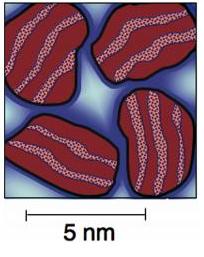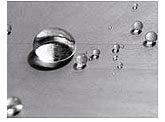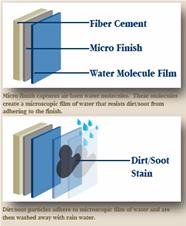Difference between revisions of "Metallic and Ceramic construction materials"
Manikandan (Talk | contribs) (→'''Initial Taxonomy for preliminary results''') |
Manikandan (Talk | contribs) (→Contact Dolcera) |
||
| Line 183: | Line 183: | ||
==Contact Dolcera== | ==Contact Dolcera== | ||
| − | + | {| style="border:1px solid #AAA; background:#E9E9E9" align="center" | |
| − | + | |- | |
| − | ''' | + | ! style="background:lightgrey" | Samir Raiyani |
| − | ''' | + | |- |
| − | + | | '''Email''': [mailto:info@dolcera.com info@dolcera.com] | |
| − | + | |- | |
| − | + | | '''Phone''': +1-650-269-7952 | |
| + | |} | ||
Revision as of 00:22, 30 April 2009
Contents
Construction materials and nanotechnology

The construction business will inevitably be a beneficiary of this nanotechnology; in fact it already is in the fields of concrete, steel and glass. Nanotechnology is coming into construction because there is a need to increase the mechanical and chemical properties of construction materials.
Two nano-sized particles that stand out in their application to construction materials are titanium dioxide (TiO2) and carbon nanotubes (CNT’s). These compounds and materials have unique properties which enable them to increase and modify glass strength and make it dust proof.
The sheer size and scope of the construction industry means that the accompanying economic impact will be huge.
Metallic Construction Materials
- Steel
Carbon nanotubes (CNT’s) are an exciting material with tremendous properties of strength and stiffness, they have found little application as an addition to steel as their inherent slipperiness (due to their graphitic nature) makes them difficult to bind to the bulk material and they pull out easily, rendering them ineffective. In addition, the high temperatures involved in steel manufacture and the effects of this on CNT’s presents a challenge for their effective use as a composite component.
Ceramic Construction Materials
- Concrete: Silica (SiO2) is present in conventional concrete as part of the normal mix. However, one of the advancements made by the study of concrete at the nanoscale is that particle packing in concrete can be improved by using nano-silica which leads to a densifying of the micro and nanostructure resulting in improved mechanical properties. Nano-silica addition to cement based materials can also control the degradation of the fundamental C-S-H (calcium-silicatehydrate) reaction of concrete caused by calcium leaching in water as well as block water penetration and therefore lead to improvements in durability.
- Cement: The nanostructure of cement is organized into a pyramid like shape, the most densely packed structure for spherical objects.A material can be used in the cement paste,This replacement material will be required to have the same packing density but not require the high production temperatures needed to produce standard cement.
- Bricks: Nanotechnology can promise strong and dust-proof bricks for construction. Nanotechnology can strongly bind the molecules resulting in good strength.Micro finish captures air born water molecules. These molecules create a microscopic film of water that resists dirt/soot from adhering to the finish.
- Floor tiles: Microscopic ceramic particles surround all open pores and prevent contaminants from getting in. Easy to handle and clean by using nanotechnology.
- Glass: Titanium dioxide (TiO2)is used in nanoparticle form to coat glazing since it has sterilizing and anti-fouling properties. The particles catalyze powerful reactions which breakdown organic pollutants, volatile organic compounds and bacterial membranes. In addition, TiO2 is hydrophilic and this attraction to water forms sheets out of rain drops which then wash off the dirt particles broken down in the previous process.
Coatings
Nanotechnology is being applied to paints and insulating properties, produced by the addition of nano-sized cells, pores and particles, giving very limited paths for thermal conduction, are currently available. This type of paint is used, at present, for corrosion protection under insulation since it is hydrophobic and repels water from the metal pipe and can also protect metal from salt water attack.
- Categorization by application
- Cross Cutting
- Food and Beverage
- Home Furnishings
- Personal Care
- Pets
- Sporting Goods
- Paint
- Clothing
- Filtration
- Automotive
- Construction Materials
- Electronics and Computers
Products search
- Search Strategy
- Product Search
- Database Search
- Conference and Tradeshows Search
Sample Analysis
| S.No. | Product Name | Company Name | Category | Image | Specifications |
| 1 | NanoSafeguard Flooring Sealant (Heavy duty) | Nanosafeguard | Ceramics | 1) Contains microscopic ceramic particles 2) It surround all open pores and prevent contaminants from getting in. 3) The sealant forms an invisible, dirt-resistant and UV-stable coating that repels water, oil and other liquids; helps prevent the adhesion of dirt, wet leaves, loam and other pollutants; and promotes cleanliness and hygiene by reducing bacterial build-up. 4) Can be easily cleaned, water is often sufficient to clear dirt and other contaminants.5) NanoSafeguard Flooring Sealant is free from silicone, wax and oil, which can diminish the longevity of the sealant. | |
| 2 | Sol-Gel Coatings | Inocermic | Ceramics | High gloss, easy to clean, sealed pores, acid and lye resistance, resistance against industrial cleaners and organic solvents, sufficient abrasion resistance, weather durability. | |
| 3 | Nano self cleaning fibre cement panels | Nichiha | Ceramics | 1) Micro finish captures air born water molecules. These molecules create a microscopic film of water that resists dirt/soot from adhering to the finish. 2) Dirt/soot particles adhere to microscopic film of water and are then washed away with rain water. | |
| 4 | Sandvik Nanoflex | Sandvik | Metallic (Steel) | N/A | 1) Based on advanced nanotechnology, the quasi crystaline particle redefines what before was thought of as not possible. 2) Good corrosion resistance 3) Nanoflex has an intermediate strength which is further increased by an additional low-temperature heat treatment. 4) Lack of distortion after final low-temperature hardening. Very complex and robust shapes become feasible – even when the dimensional tolerances specified are extremely tight. 5) Excellent alternative to titanium, aluminum and carbon fiber, all of which suffer from individual disadvantages. 6) Very small particles, measuring 1-10 nanometers, are formed during heat treatment. These particles are extremely hard and are embedded in a tough matrix. The result is an unmatched combination of strength and resilience. 7) Higher corrosion resistance in aqueous solutions than ordinary stainless steels, such as ASTM type 304. 8) The Sandvik Nanoflex® tube offers a 19% weight reduction compared to its titanium counterpart. |
| 5 | MMFX2 Steel | MMFX | Metallic (Steel) | 1) Superior strength, corrosion resistance, 2) MMFX steels can be produced up to three times as strong as conventional reinforcing steels. 3) MMFX steels are extremely high-strength and at the same time maintain high levels of ductility, allowing these steels to be integrated into applications demanding these combined properties. 4) MMFX steels maintain excellent mechanical behavior at temperatures below -200°F. 5) Due to MMFX proprietary microstructure, these steels exhibit substantial improvement in crack, impact, and fatigue resistance over conventional reinforcing steels. | |
| 6 | Ecologycoatings | Ecologycoatings | Coatings (Automotive) |
N/A |
1)Ecology Coatings is able to offer a coating for metals that is 100% solids that is UV curable. Also, attaining desired pigmentation is typically thermally dependent. Ecology Coatings is able to achieve desired pigmentation under a UV Curable situation. 2)Thermally independent curing process |
Product databases
| S.No | Database |
| 1. | Dmoz |
| 2. | Nanocafes |
| 3. | Nano in germany |
| 4. | Nanoproducts.de |
| 5. | Nanowerk |
| 6. | Machine design |
| 7. | Nanoshop |
| 8. | Globalspec |
| 9. | Nanoprojects |
Conferences and tradeshows list
| S. no | Conference |
| 1 | NSTI |
| 2 | Nanoingermany |
| 3 | Nanokorea |
| 4 | Database for all conferences on nanotechnology |
Initial Taxonomy for preliminary results
Dolcera will analyze and search products according to the above databases, tradeshows and taxonomy.
Contact Dolcera
| Samir Raiyani |
|---|
| Email: info@dolcera.com |
| Phone: +1-650-269-7952 |




